Australia’s fabulous kingfishers

Kingfishers live all over Australia, but predominantly in coastal regions. We have 10 native species, including the kookaburra, which is the largest.
Kingfishers nest in tree hollows, in burrows in riverbanks and in termite nests. They feed on small animals, including fish, frogs, yabbies, snakes, insects and nestlings of other birds.
Cloaked in stunning green, blue, turquoise and orange plumage, some kingfishers were once in danger of being hunted to extinction for their feathers.
Despite their elaborate garb, these stocky birds are tough, and hunt by darting upon prey in a flash of colour from branches above the river or forest floor. The kingfisher’s heavy beak is the perfect tool for despatching victims quickly – they smack their hapless prey against tree branches before swallowing them whole.
Sacred kingfisher
Todiramphus sanctus
Length: 20–23cm Wingspan: 29–33cm
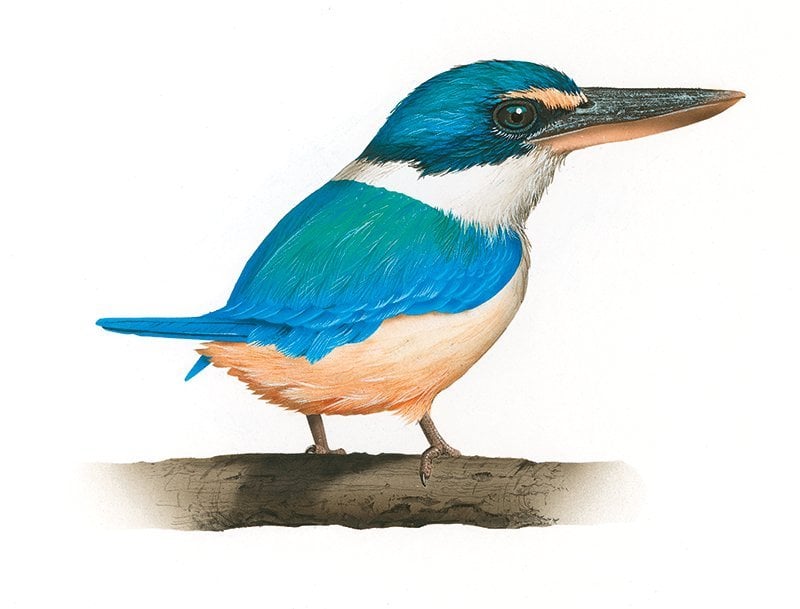
This turquoise-green kingfisher is found in open forests and on the edges of lakes, mudflats and streams, as well as in parks, golf courses and near garden ponds. Although it feeds mainly on insects and small reptiles, it isn’t above pillaging goldfish from unguarded ponds.
Buff-breasted paradise kingfisher
Tanysiptera sylvia
Length: 29–35cm Wingspan: 34–35cm

Despite its striking red bill and long white tail feathers (which make up half its body length), this species is difficult to spot in the rainforests and gullies where it lives, but is occasionally seen in thickly vegetated gardens. It breeds in Australia and nests in active termite mounds – flying beak-first into the mound until it has dug a hole. Once the young are fledged, they fly with their parents to New Guinea for the winter.
Red-backed kingfisher
Todiramphus pyrrhopygius
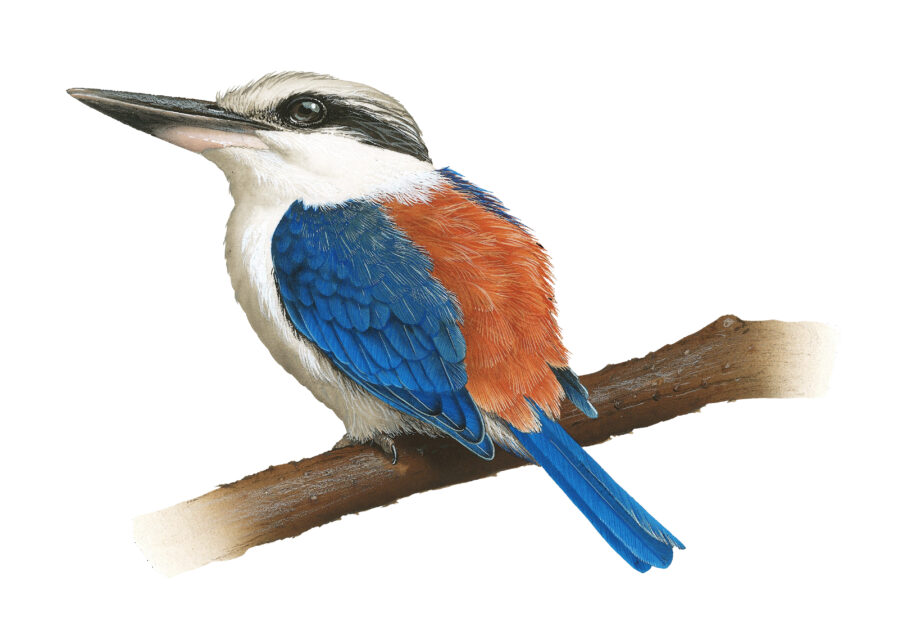
Collared kingfisher
Todiramphus chloris
Length: 24–29cm Wingspan: 42–52cm

Also known as the mangrove kingfisher, it lives only along northern coastlines, from Shark Bay, WA, to the lower Clarence River, NSW. It prefers to eat crabs and fish, but will eat insects, small reptiles and nestlings of other birds if the seafood pickings are slim.
Little kingfisher
Alcedo pusilla
Length: 11.5–13cm Wingspan: 20–26cm
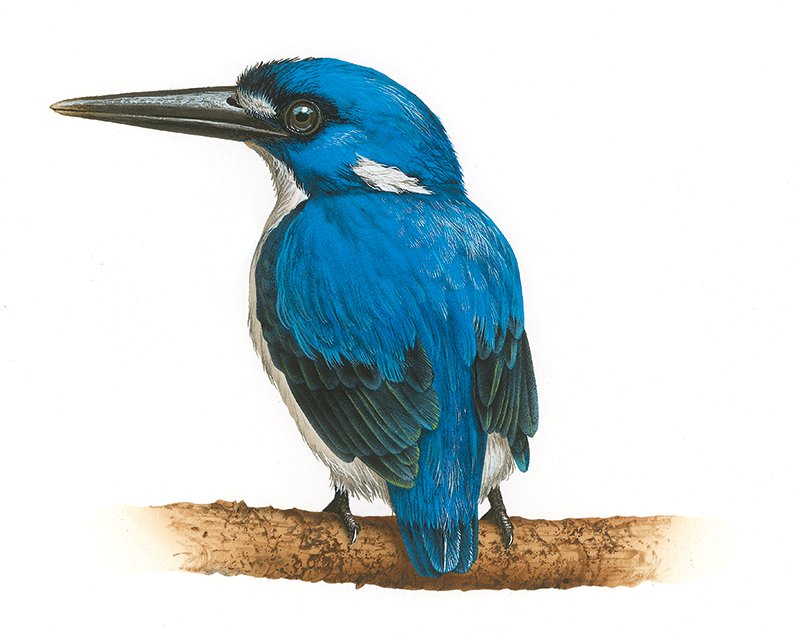
The little kingfisher is the smallest of our native species. Its glossy, dark-blue plumage flashes as it darts across the water, hunting for small fish and crustaceans, which are its main prey. It lives along thickly vegetated coastal creeks, mangroves, swamps and rainforest streams.
Azure kingfisher
Alcedo azurea
Length: 17–19cm Wingspan: 25–29cm
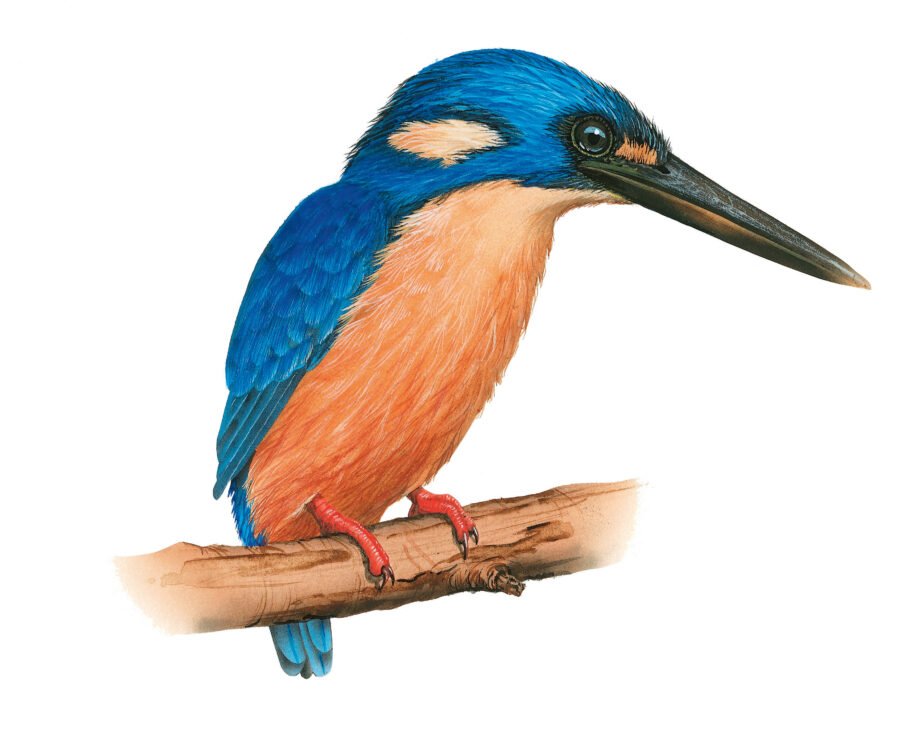
Similar to the little kingfisher, the azure makes its home along the banks of coastal and inland rivers, swamps and mangroves. During breeding season, it lines its nest with fish bones and scales. Found along much of our northern and eastern seaboards, as well as Tasmania, this species hunts for small mammals, reptiles, fish and frogs.
Yellow-billed kingfisher
Syma torotoro
Length: 18–21cm Wingspan: 34–35cm
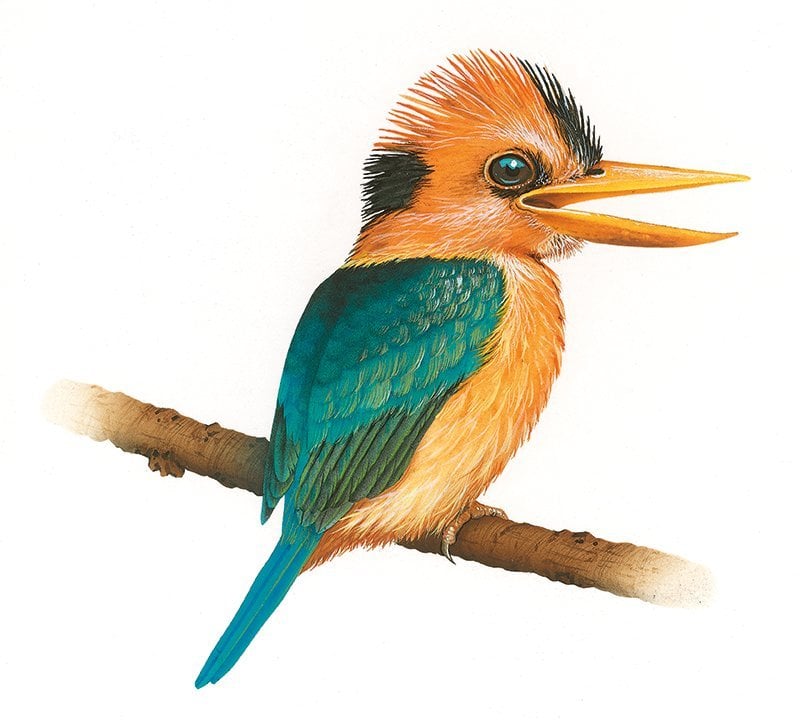
Bright orange and olive green sounds gaudy, but the yellow-billed kingfisher manages to pull it off. In Australia these birds are only found on Cape York Peninsula, where they feed on insects, earthworms and lizards. During the mating season, males display by raising their orange head-feathers to form a crest.
Forest kingfisher
Todiramphus macleayii
Length: 18–23cm Wingspan: 34-35cm
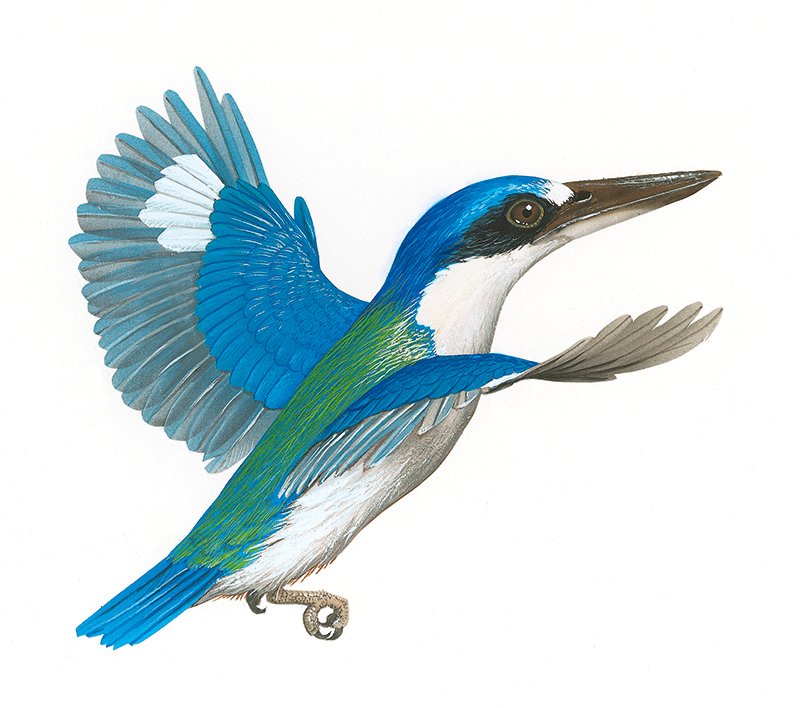
This bird prefers to live in lightly wooded country, as well as at the edges of fields and beaches. It can be found from the Top End to the Gold Coast. With its deep-blue and pale-turquoise colouring, it is a beautiful bird, often seen perched on powerlines, as it watches for insects and small lizards.
All illustrations by Kevin Stead.

